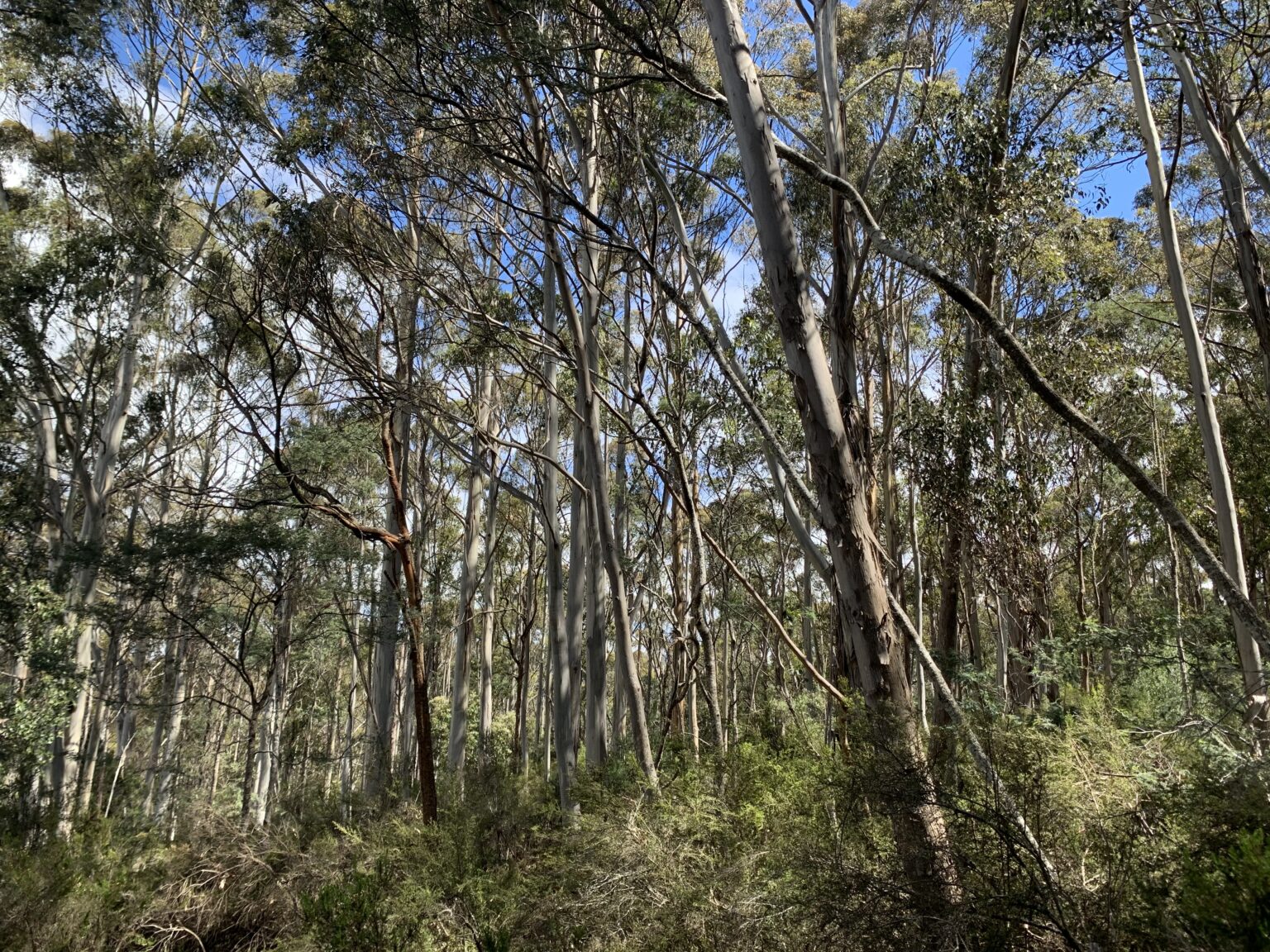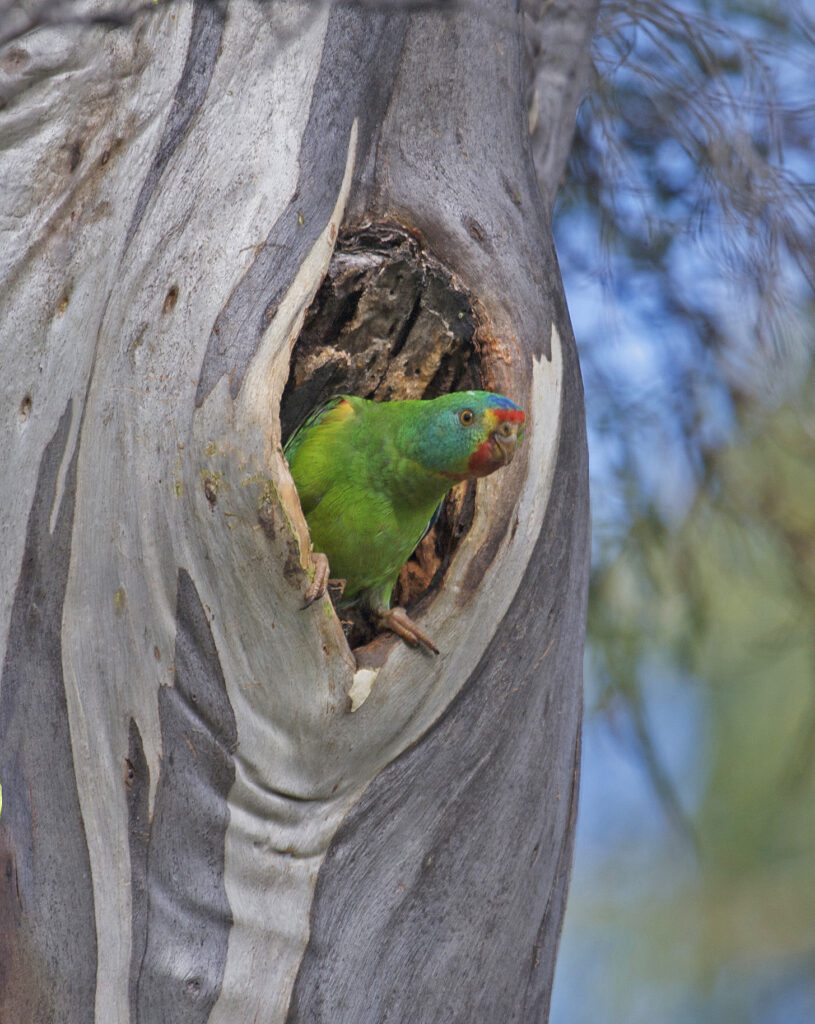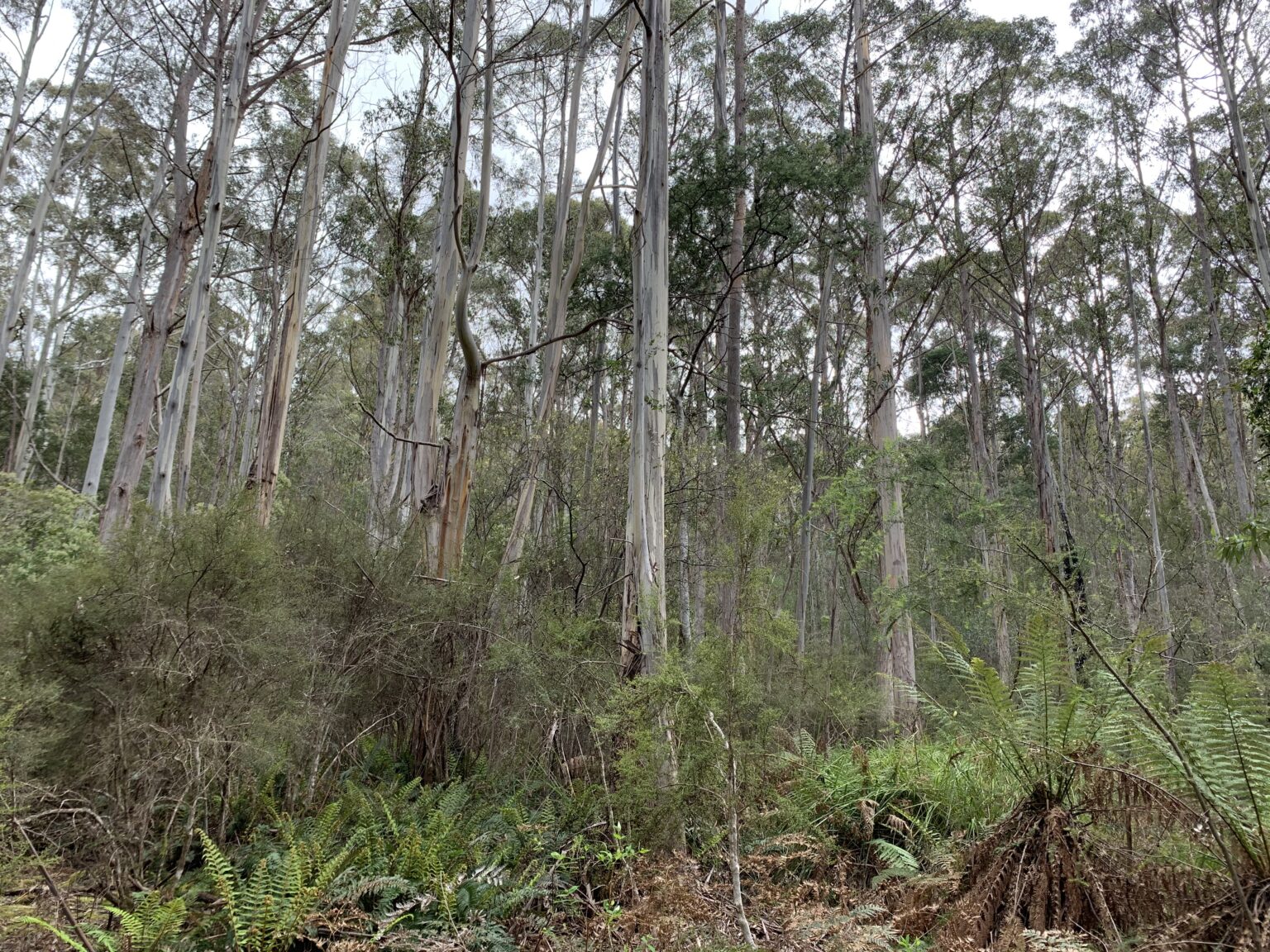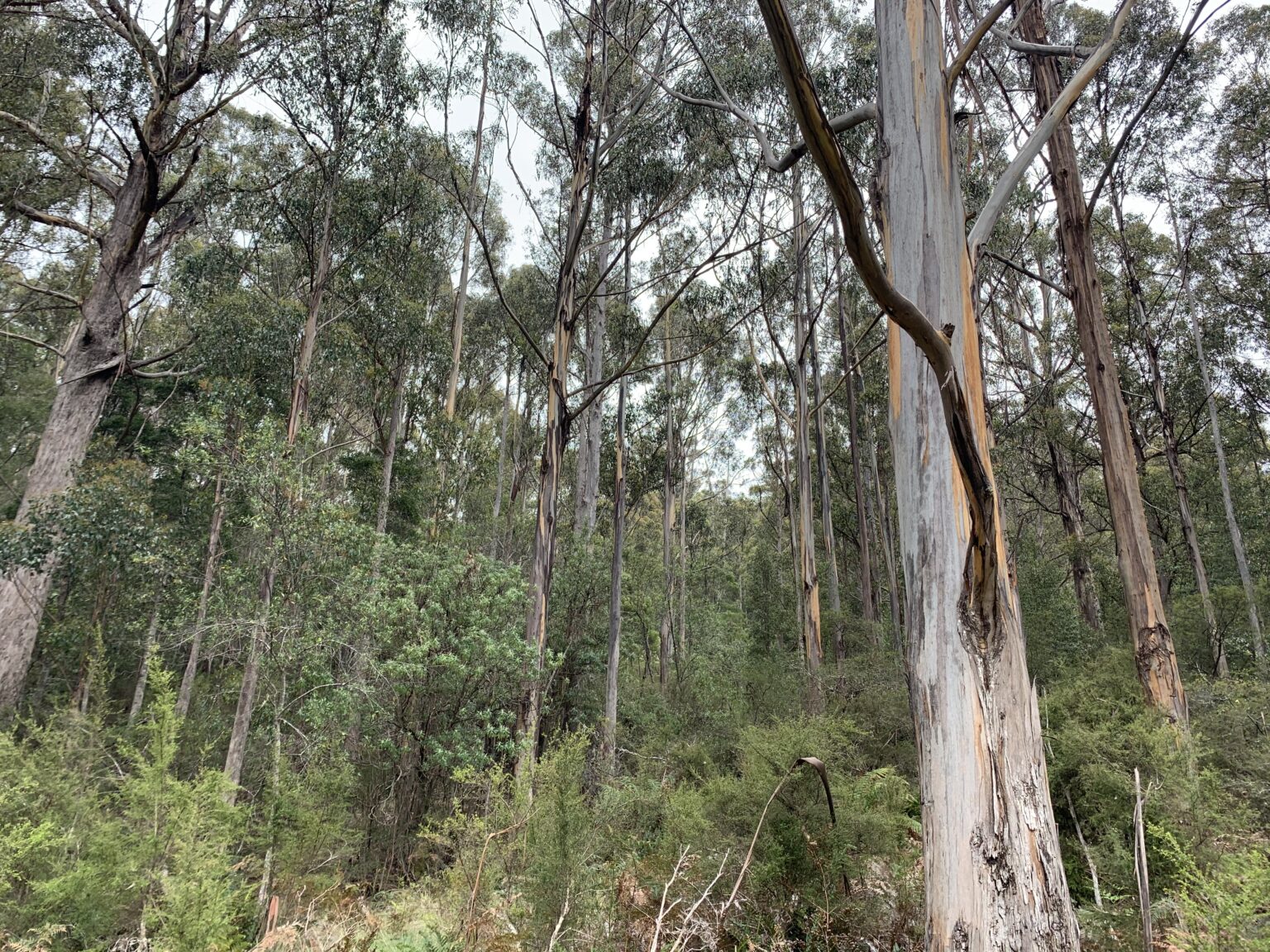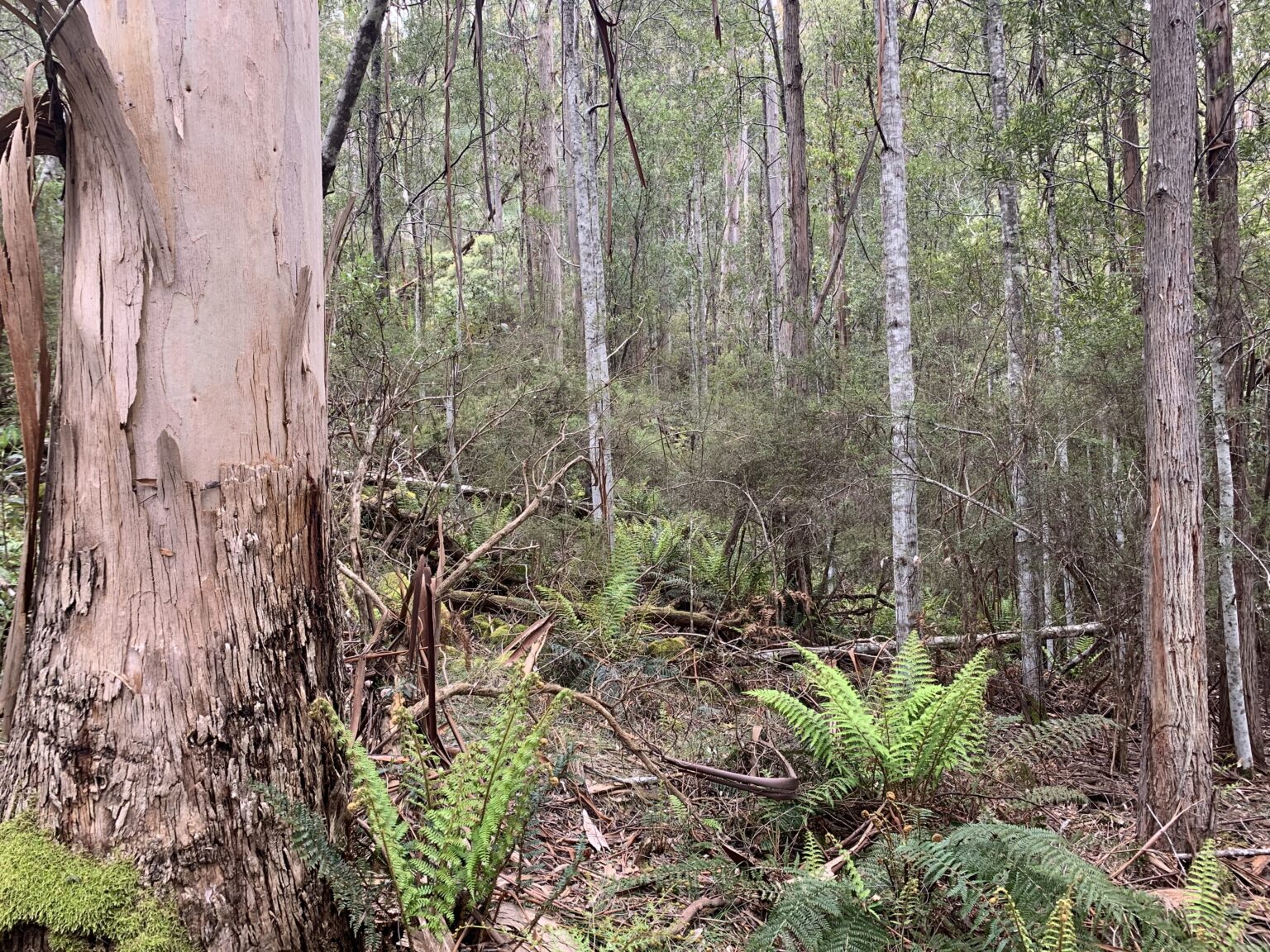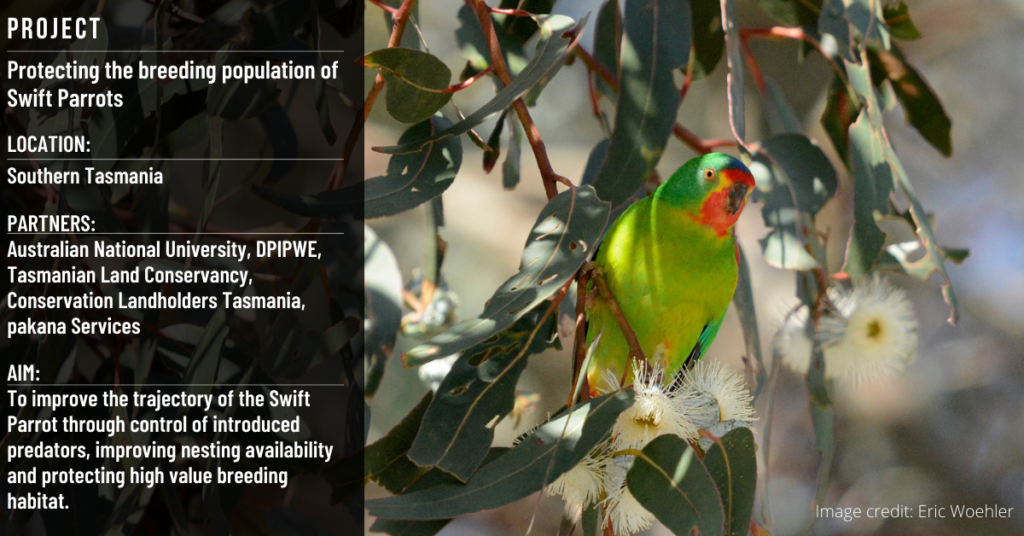
Tasmania’s parks and reserves are important for protecting and sustaining habitats and the species that rely on them. However, a protected areas model alone is not enough to sustain biodiversity across our landscapes. Integrating protected areas into private land is increasingly recognised as important for broader conservation goals. As part of our efforts to protect habitat for critically endangered Swift Parrots, NRM South is supporting the establishment of multiple conservation covenants on private land over the next few years with the aim of improving Swift Parrots’ breeding success.
SWIFT PARROTS IN DECLINE
Swift Parrots migrate to Tasmania every summer and set up their nests in tree hollows near stands of flowering blue and black gum. Unfortunately, with competition for increasingly fewer nesting hollows and the impacts of predation by introduced sugar gliders, Swift Parrots are under pressure and in decline.
Swift Parrots are a challenging species to protect. They select breeding sites based on a variety of factors – including tree hollow availability and the flowering patterns of Tasmanian blue gums and black gums (also commonly known as swamp gums). While some of their preferred habitat is tucked away in remote and protected areas, they also rely on habitat in modified areas.
Conservation covenants in Tasmania are established under the Private Land Conservation Program and are just one of the tools used to protect natural values and contribute areas of ecological significance to Australia’s network of protected areas, the National Reserve System. They help to sustainably manage and conserve natural values (e.g. native flora and fauna, natural wetlands, geoconservation areas) on private land.
As of September 2020, there were 890 conservation covenants on private land across Tasmania, covering approximately 110,000 hectares.
Over the last financial year, NRM South (working with project partners the Tasmanian Land Conservancy and the Department of Primary Industries, Parks, Water and Environment (DPIPWE)), has secured two new covenant sites, representing 122 hectares of high-value Swift Parrot habitat.
The sites in Pelverata (Huon Valley) and Wielangta (near Orford) have now been assessed and approved for covenants. These legally binding agreements will contribute pockets of ecologically valuable land to Tasmania’s reserve estate.
Simon and Jo Roberts, owners of one of the newly covenanted properties, are in an area that is home to high value Swift Parrot habitat. Not only is a significant portion of their 95-hectare property covered with native vegetation suitable for foraging, but Swift Parrots have also been recorded nesting on or near the property. In addition, their property adjoins two existing conservation covenants and is situated near two other reserve areas.
Their approach to land management is focused on the maintenance and improvement of habitat to provide additional resilience for native and threatened species and vegetation communities outside the publicly owned reserve estate. They understand their property is part of the wider landscape and value its potential contribution to local, regional, state and federal ecological assets.
‘We feel very privileged to contribute our property to areas protected for endangered species. Many of the animal species in Tasmania that have become extinct or rare on the mainland are still able to maintain viable populations here due to large areas of habitat that have remained relatively intact. Unfortunately, a large proportion of these refuges are on private land and are therefore under threat from increasing development. Similarly, there are many vegetation communities that are threatened in Tasmania due to historic and ongoing human impacts. We feel a duty of care not only to the animals and plants that occur on our properties but also to their viability as species into the future.’ – Simon Roberts
Once covenants are approved the landholders will be guided on how best to maintain the condition of their covenanted area. They will be provided with a management plan that clearly identifies the area’s natural values and provides guidance on how to protect its natural diversity.
‘We are heartened that there are now a number of organisations that are protecting private land with high natural value either through binding or non-binding agreements on land stewardship. However, the number and size of the privately owned reserve estate is still far too small to sufficiently protect many of these species and vegetation communities. Tasmania is at a critical point in relation to preserving the natural assets that its residents’ value and that are internationally recognised. Current threats from agricultural and residential development as well as climate change could see a new wave of species extinctions if we do not act in the best interests of natural ecological communities on private land. We would be thrilled to see a large program of conservation covenants on private land aimed at substantially increasing the amount of reserved habitat for endangered species and threatened vegetation communities.’ – Simon Roberts
This program is supported by NRM South, in partnership with the Australian National University, DPIPWE, Tasmanian Land Conservancy, Conservation Landholders Tasmania and pakana Services, through funding from the Australian Government’s National Landcare Program.
